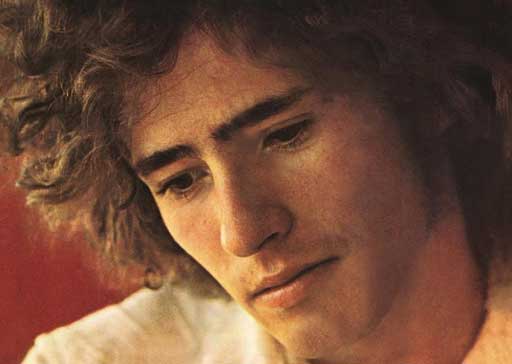Tim Buckley was just 28 years old when he died, in 1975, and yet he’d lived a musical lifetime. In a mere nine years he’d recorded just as many albums, freewheeling wildly across the musical landscape with a resonant and supple voice that bent to whichever style he embarked upon. His third album, 1969’s Happy Sad, is the one that made all that possible – the point where Buckley, his horizons expanded by his love of jazz, began following his muse.
Listen to Happy Sad here.
“He was like Miles Davis: uncompromising”
While Buckley’s self-titled 1966 debut album saw his record label, Elektra (home to The Doors and Love), attempt to mould the easy-on-the-eye newcomer as the new hot thing in folk-rock, there were already signs – in its more adventurous meanderings and his elastic, assured vocals – that Buckley’s talents and sense of daring might not be easily reined in. His follow-up, 1968’s Goodbye And Hello, was an altogether more ambitious record, with the wild abandon of the six-minute folk frenzy I Never Asked To Be Your Mountain, along with such elegant, introspective ballads as Once I Was and Morning Glory, pre-empting Buckley’s future direction while suggesting a distinctive songwriting voice in its own right.
By this point Buckley was racing ahead before his audience had a chance to catch up. His touring group comprised of Carter Collins on congas, David Friedman on vibraphones, John Miller on upright bass and Lee Underwood on guitar – all players with jazz backgrounds, which encouraged Buckley to emulate the improvisational qualities of the music he was increasingly identifying with. As Friedman told Mojo in 2000: “What I loved most about him was his ability to improvise vocally. He was a little like Miles Davis: uncompromising as a musician, and one who could tell the difference between playing and really playing. He would sometimes scream at you onstage if he didn’t think you were giving everything. When you consider how young the guy was, it was incredible what an intuitive, spontaneous sense of music he had.”
“His lyrics are as jazz as any of the solos”
Buckley and his band’s deep appreciation of Miles Davis was most keenly felt on Happy Sad’s opening track, the unhurried and ravishing Strange Feelin’, as Friedman confirmed: “One day John and I were passing time with the changes to the Miles tune All Blues [from A Kind Of Blue, 1959]. Tim came in, picked up his guitar and began to play along, jamming instrumentally and vocally until eventually it turned into Strange Feelin’. We fine-tuned it before it was recorded for Happy Sad, but as I recall, the words didn’t change too much from the ones he’d improvised on the spot. If you listen to the way he sings them, you’ll understand that those lyrics are as much jazz as any of my solos.”




